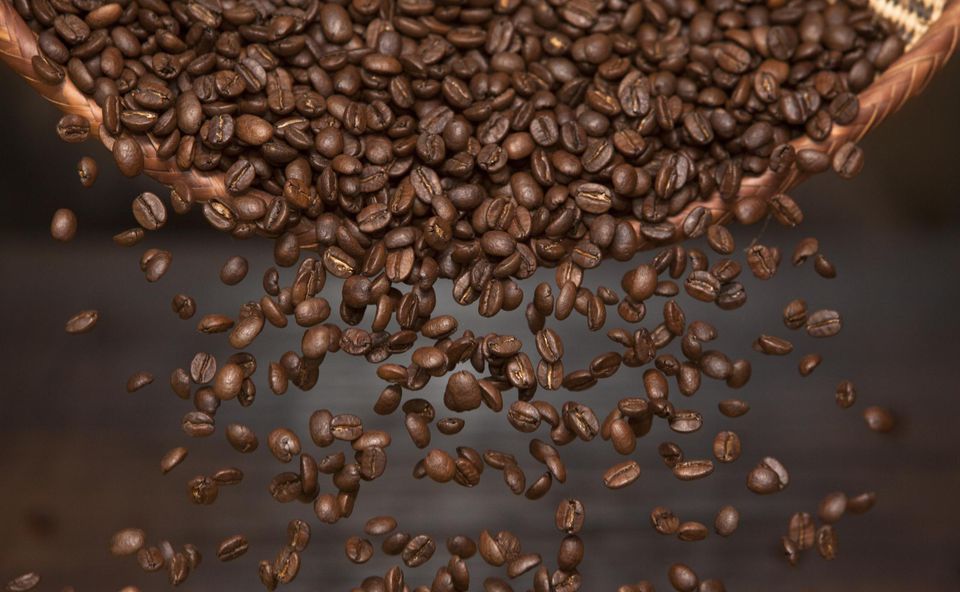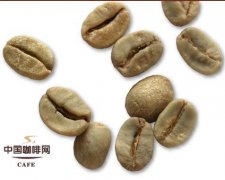Differences and characteristics of three treatments of raw coffee beans: washing, sun drying and honey treatment
The treatment methods of raw coffee beans can be divided into three types: sun exposure, water washing and honey treatment.
The basis for distinguishing each method is that before the coffee is dried
Several layers of matter are removed from the fruit.
[sun]
[natural sun treatment: retention of all substances]
The fruit begins the process of sun drying without treatment after picking. This is the oldest method of treatment in existence. The drying process usually lasts about 4 weeks. The method of handling must be very stringent. The natural sun method requires the local climate to be extremely dry. In some areas, people use dryers to assist in the drying process of coffee fruit (the hot air of the dryer can speed up the drying process and help people control the degree of drying). [Brazilian half-sun: natural removal of pectin] Brazilian coffee fields are endless and are mostly harvested mechanically in order to achieve economic benefits. When 75% of the coffee fruit in the coffee garden turns red, mechanical harvesting is started, followed by the same pre-washing operation, which is moved into the sink to remove floating beans, sift out the sunken beans, and then use a large pulp screening machine to dig out the pulp and remove the pods covered with pectin.
Next, move the sticky pods to the outdoor drying farm. Brazil has a dry climate, and the sticky pectin on the pods will harden in about a day or so. Then use a large number of manpower to turn it up and down, and the pods can reach a certain degree of dehydration in about two or three days. Further dry the pods in a dryer, store the pods for about 10 days, and further ripen the pods for stable quality. before export, remove the sheepskin shavings (pods), remove the coffee beans and pack them in grades.
[washing]
Complete washing method: the peel, pulp and mucous membrane were removed by washing and fermentation. ]
(1) choose beans:
Put the harvested fruit in a water tank and soak for about 24 hours. At this time, ripe fruit will sink, while immature and overripe fruit will float up and can be removed.
(2) remove the pulp:
Use a machine to remove the peel and pulp, leaving only coffee beans wrapped in endocarp. At this time, there is a layer of mucous membrane on the outside of the beans, and the process of washing is to wash this layer of mucous membrane.
(3) hair alcohol:
The adhesion of the mucous membrane is very strong and is not easy to remove. It must be placed in the slot for about 18-36 hours to make it alcohol and decompose the mucous membrane. There are two methods of fermentation, namely wet hair alcohol and dry hair alcohol, the former with water, the latter without water. In the process of producing alcohol, the seeds and internal pulp will produce special changes, which is one of the steps that most affect the flavor of coffee.
(4) washing:
Farms that use the washing method must build washing ponds and be able to introduce an endless supply of running water. During the treatment, the finished beans are put into the pool and passed back and forth, using the friction of beans and the power of running water to wash the coffee beans until smooth and clean.
(5) drying
After washing, the coffee beans are still wrapped in the pericarp with a moisture content of 50%. They must be dried to reduce the moisture content to 12%, otherwise they will become moldy and rotten. The better treatment is to use sunlight to dry, although it will take 1-3 weeks, but the flavor is very good and very popular.
(6) shelling
The dried beans can be stored in a warehouse or handed over to the factory for shelling to remove endocarp and silver film. Finally, like tanning hair, washed coffee has a process of picking and grading, which is used to remove defective beans and ensure better quality, which is then handed over to exporters to sell around the world.
[natural washing method: a method of using a high-pressure washing machine to treat coffee beans]
This method is extremely common in Brazil. The natural washing method is very similar to the water washing method, except that the natural washing method uses a high-pressure washing machine to remove the mucous membrane of the coffee surface, thus skipping the fermentation process. Several raw coffee processing companies in Brazil and Colombia have patented this method and have become local natural water system processing monopolies.
The water consumption of this method is much lower than that of water washing, so some people like to call it "semi-drying (Semi-Dry)". Because there is no fermentation, coffee beans do not exist (or only have a very low risk of fermentation), and the overall quality of coffee is more constant. Unfortunately, the taste of coffee tends to be flat because it is not fermented.
[honey]
[honey treatment: remove the peel and pulp, retain some or all of the mucous membrane] (pulp sun ≈ honey treatment)
Today, honey treatment is used in almost all the producing areas of Costa Rica. This method is also widely spread throughout Central America. Because the surface mucosa of coffee beans is extremely slippery and the sugar content is extremely high, it is often called "honey". In the process of honey treatment, coffee will leave some or all of the "honey" when it is dried. Because the drying time of the mucous membrane is very short, coffee beans hardly ferment during the drying process. The acidity of coffee beans processed by this method is slightly higher than that of natural washing, but much lower than that of natural washing and natural sun processing.
Grading of raw coffee beans after honey treatment. There are three levels: yellow, red and black. The change in color results from the length of light during the drying process of coffee. "Yellow honey" is with 25% endocarp, 50% "red honey" and 100% "black honey". Therefore, from "yellow honey" to "black honey", the drying time is longer and the management requirements are more stringent.
The reason why it was said before that the pulp sun method ≈ honey treatment, because in a narrow sense, the flesh sun method is limited to Brazilian coffee, Brazil's peeling machine generally does not have the function to adjust the caliber of peeling, the default condition to scrape off most of the flesh, that is, the "yellow honey" grade.
[raw coffee beans treated with yellow honey] had the longest light time. Longer light means higher heat, so the coffee can be dried within a week. In general, the drying time of coffee depends on the local climate, temperature and humidity.
The drying time of [raw coffee beans treated with red honey] is 2-3 weeks, usually due to weather or placed in the dark. If the weather is clear, the grower should block part of the sun to reduce the sunshine time.
[raw coffee beans treated with black honey] the longest drying time in the dark and the shorter the light time. This coffee should be dried for at least two weeks. The black honey treatment of raw coffee beans is the most complex and the labor cost is the highest, so the price is the most expensive.

Important Notice :
前街咖啡 FrontStreet Coffee has moved to new addredd:
FrontStreet Coffee Address: 315,Donghua East Road,GuangZhou
Tel:020 38364473
- Prev

The difference between water washing treatment and sun treatment of raw coffee beans
For a coffee bean, is it better to wash in water than in the sun, or is it better in the sun than in water? At least before I know it, I disdain to wash beans with water. I always feel that the sun is better than washing, and the sun is a little higher. So, in fact, it is a matter of opinion which is better for the two kinds of raw coffee beans. The editor would also like to introduce to you this time.
- Next

Treatment of raw coffee beans: the difference between half-sun and half-water washing
Half-sun: when it comes to half-sun, we have to mention Brazil. Brazil is synonymous with half-sun, so we often say half-sun in Brazil. Before half-sun was studied, Brazil basically used the method of tanning, but after the last issue, we also knew that half-sun came out, and it was really a double-edged sword, and Brazil was precisely the kind that was cut into itself.
Related
- What is the meaning of lactic acid fermentation with coffee bean treatment?
- How to judge the state of foam by sound?
- How does the latte pull out the unicorn pattern? Come to get for a little trick to improve the flower pull!
- Will flower pulling affect the taste of the latte?
- Do you know the history of coffee?
- The difference between honey treatment and sun washing what is raisin honey treatment?
- What kind of milk can a novice use to make coffee foam to keep the foam longer? The correct method and skills of milking tutorial sharing
- Why do washed coffee beans taste sour? Flavor characteristics of washed Coffee
- Introduction to the skill of how to practice the size and height of water injection around the circle of hand-brewed coffee
- How do beginners practice coffee flower drawing from scratch?

